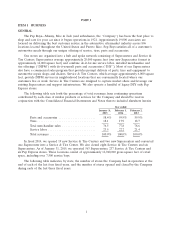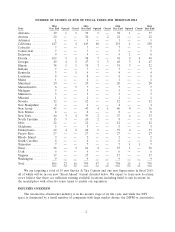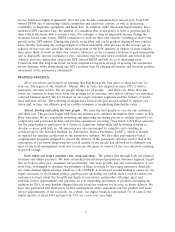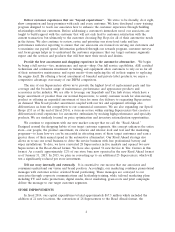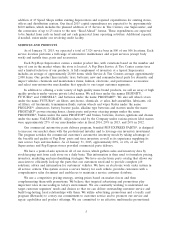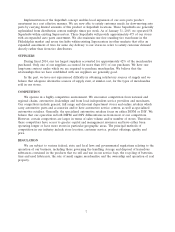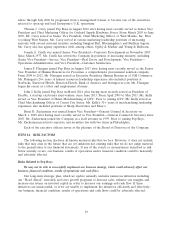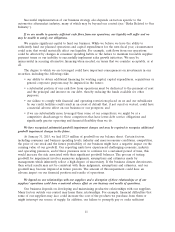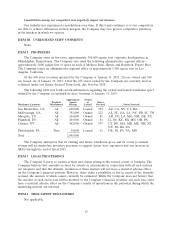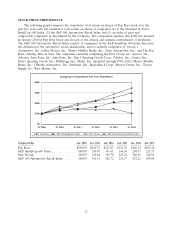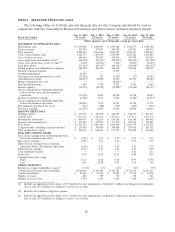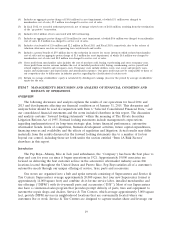Pep Boys 2014 Annual Report Download - page 17
Download and view the complete annual report
Please find page 17 of the 2014 Pep Boys annual report below. You can navigate through the pages in the report by either clicking on the pages listed below, or by using the keyword search tool below to find specific information within the annual report.Successful implementation of our business strategy also depends on factors specific to the
automotive aftermarket industry, many of which may be beyond our control (see ‘‘Risks Related to Our
Industry’’).
If we are unable to generate sufficient cash flows from our operations, our liquidity will suffer and we
may be unable to satisfy our obligations.
We require significant capital to fund our business. While we believe we have the ability to
sufficiently fund our planned operations and capital expenditures for the next fiscal year, circumstances
could arise that would materially affect our liquidity. For example, cash flows from our operations
could be affected by changes in consumer spending habits or the failure to maintain favorable supplier
payment terms or our inability to successfully implement sales growth initiatives. We may be
unsuccessful in securing alternative financing when needed, on terms that we consider acceptable, or at
all.
The degree to which we are leveraged could have important consequences on investments in our
securities, including the following risks:
• our ability to obtain additional financing for working capital, capital expenditures, acquisitions or
general corporate purposes may be impaired in the future;
• a substantial portion of our cash flow from operations must be dedicated to the payment of rent
and the principal and interest on our debt, thereby reducing the funds available for other
purposes;
• our failure to comply with financial and operating restrictions placed on us and our subsidiaries
by our credit facilities could result in an event of default that, if not cured or waived, could have
a material adverse effect on our business or our prospects; and
• if we are substantially more leveraged than some of our competitors, we might be at a
competitive disadvantage to those competitors that have lower debt service obligations and
significantly greater operating and financial flexibility than we do.
We have recognized substantial goodwill impairment charges and may be required to recognize additional
goodwill impairment charges in the future.
At January 31, 2015, we had $32.9 million of goodwill on our balance sheet. Certain factors,
including consumer and business spending levels, industry and macroeconomic conditions, competition,
the price of our stock and the future profitability of our business might have a negative impact on the
carrying value of our goodwill. Our reporting units have experienced challenging economic, industry
and operating pressures, and if these pressures were to continue for a sustained period of time, this
would increase the risk associated with their significant goodwill balances. The process of testing
goodwill for impairment involves numerous judgments, assumptions and estimates made by
management which inherently reflect a high degree of uncertainty. If the business climate deteriorates,
then actual results may not be consistent with these judgments, assumptions and estimates, and our
goodwill may become impaired in future periods. The amount of this impairment could have an
adverse impact on our financial position and results of operations.
We depend on our relationships with our suppliers and a disruption of these relationships or of our
suppliers’ operations could have a material adverse effect on our business and results of operations.
Our business depends on developing and maintaining productive relationships with our suppliers.
Many factors outside our control may harm these relationships. For example, financial difficulties that
some of our suppliers may face could increase the cost of the products we purchase from them or
might interrupt our source of supply. In addition, our failure to promptly pay or order sufficient
11


